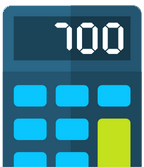What is the Personal Allowance in Scotland for 2022-23?
For the 2022-23 tax year, your Personal Allowance amount as a Scottish taxpayer is £12,570. This amount is the same as the rest of the UK.
What does the Personal Allowance mean for Scotland?
Your Personal Allowance is the amount of money you can earn tax free. During the tax year that starts on 6th April 2022 and ends 5th April 2023, if you make under £12,570 you don’t pay any Scottish income tax at all.
You must pay income tax on any amount you earn over the Personal Allowance amount. The rate of tax you pay depends on how much you earn.
Scottish Income Tax Rates
As a Scottish taxpayer, your income tax rates are different to the rest of the UK. For the 2022-23 tax year, the Scottish Income Tax rates are:
- 19% Starter Rate on income between £12,571 and £14,732
- 20% Scottish Basic Rate on income between £14,733 and £25,688
- 21% Intermediate Rate on income between £25,689 and £43,662
- 41% Higher Rate on income between £43,663 and £150,000
- 46% Top Rate on income over £150,000
Your Personal Allowance and income over £100,000
Once your annual income goes over £100,000, your Personal Allowance reduces at a rate of £1 for every £2 your earnings are over £100,000.
To save you doing the maths, by the time you earn £125,140, your Personal Allowance amount is reduced to zero.
Other taxes and tax reliefs
As a Scottish taxpayer, any income from dividends or savings interest is taxed at UK income tax rates. The distinction between Scottish and UK tax rates will only be visible on your annual tax summary. You won’t get a breakdown on your payslip, P45 or P60.
You’re entitled to the same tax reliefs and allowances as other UK taxpayers. But some minor changes might apply because of your Scottish Taxpayer status. So make sure you read all the details.
Remember, HMRC still administer and collect Scottish income tax. So you should direct any questions to them directly.
How do I know if I’m paying Scottish income tax?
If you’re paid through the PAYE system, you’ll see that your tax code has the prefix ‘S’ which means that you’re paying Scottish income tax. The numbers of your code will probably be 1257, indicating that the applicable Personal Allowance rate is £12,570.
And a suffix of ‘L’ means that you’re entitled to the full Personal Allowance amount. Through this alphanumerical code, HMRC communicates all the necessary information to you and your employer.
If you have any of the less common coding, the ‘S’ always refers to your status as a Scottish income taxpayer.
If you only pay tax through the self assessment system, you don’t need to enter anything on your tax return to tell HMRC that you pay Scottish income tax rates. They’ll just work it out based on your address.
How do I know if I’m a Scottish income taxpayer?
In the simplest circumstances, if you live and work in Scotland, you pay Scottish income tax rates.
You can’t decide that you’re a Scottish taxpayer because you were born in Scotland, or consider yourself Scottish by heritage.
In more complex situations, HMRC consider you to be a Scottish taxpayer if:
- You have property in Scotland and elsewhere in the UK, and your ‘main home’ is in Scotland.
- You spend the majority of the time, in that tax year, in Scotland and you don’t consider anywhere your ‘main home’.
- You move into or out of Scotland in the middle of a tax year and most of the year has been spent in Scotland – even if you’re living in another part of the UK by the end of it.
If you’re in any doubt about the accuracy of your tax code, it’s important to get it sorted out sooner, rather than later. HMRC are responsible for your tax position as a Scottish taxpayer and can answer any of your questions.
So if you think you should be classed as a Scottish taxpayer and you’re not, or vice versa, give them a call. It’s all part of making sure you’re paying the correct amount of income tax, once you earn more than the Personal Allowance.
Tax claim calculator
Start your tax rebate claim today...
Just select your industry from the field below and we'll calculate the average rebate.*







